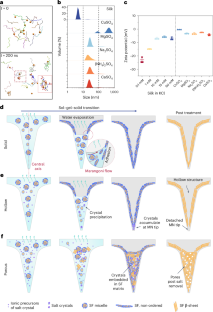2025-04-29 マサチューセッツ工科大学(MIT)
<関連情報>
- https://news.mit.edu/2025/will-vegetables-future-be-fortified-using-tiny-needles-0429
- https://www.nature.com/articles/s41565-025-01923-2
植物における高スループット微量栄養素送達と連続樹液モニタリングのための絹マイクロニードルのナノ加工 Nanofabrication of silk microneedles for high-throughput micronutrient delivery and continuous sap monitoring in plants
Yunteng Cao,Doyoon Kim,Sally Shuxian Koh,Zheng Li,Federica Rigoldi,Julia Eva Fortmueller,Kasey Goh,Yilin Zhang,Eugene J. Lim,Hui Sun,Elise Uyehara,Raju Cheerlavancha,Yangyang Han,Rajeev J. Ram,Daisuke Urano & Benedetto Marelli
Nature Nanotechnology Published:29 April 2025
DOI:https://doi.org/10.1038/s41565-025-01923-2

Abstract
Biomaterials bridging the biotic–abiotic interface in plants offer the opportunity to precisely deliver agrochemicals and continuously monitor plant health, with the goals of increasing resilience to climate change, enhancing crop production and mitigating environmental impact. In this study we report the manipulation of silk fibroin assembly with inorganics nucleation at their phase front to nanomanufacture porous and hollow microneedles that can be interfaced with plants. Plant growth analysis and quantification of wounding gene expression show a non-significant systemic wounding response to the injection of silk microneedles in tomato plants. Microneedles with a hollow structure enable the systemic delivery of plant micronutrients to treat chlorosis in tomato plants and crop biofortification through transport of human micronutrients injected in the petiole and loaded into tomato fruits. Hollow microneedles also provide access to plant vasculature for sap sampling, enabling continuous monitoring and early detection of phytoaccumulation of environmental contaminants such as cadmium.



